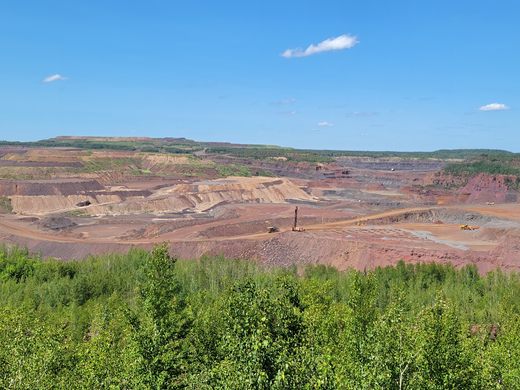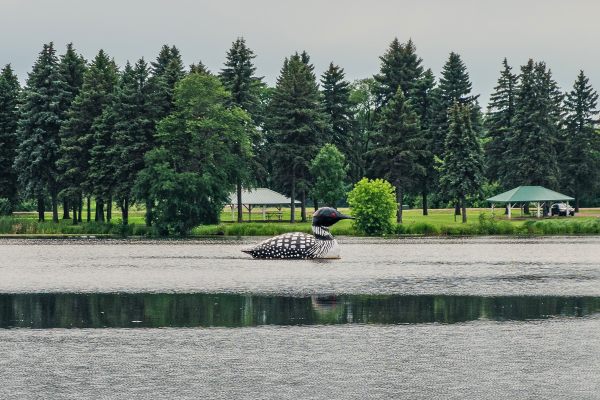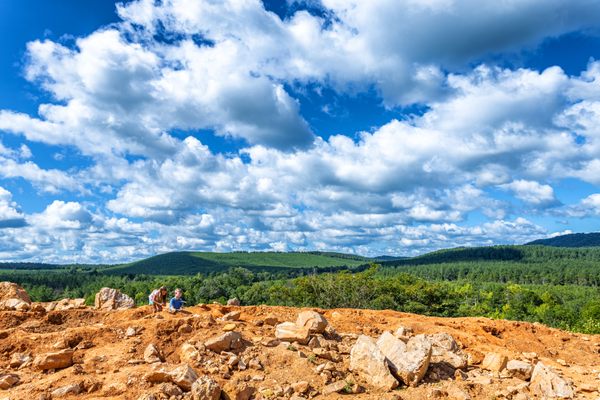Hull–Rust–Mahoning Open Pit Iron Mine
Nicknamed the "Grand Canyon of the North," this open-pit mine in Minnesota has a much shorter history.
Wandering through Minnesota’s relatively flat Arrowhead region, you might stumble upon what seems to be a beautiful series of gorges and fluvial terraces rivaling the splendid canyonlands of the American Southwest. But what you’re seeing isn’t a natural geologic formation, it’s a massive mining project that’s been reshaping the environment for over 120 years.
With a maximum length of eight miles and maximum width of three-and-a-half miles, the Hull–Rust–Mahoning Open Pit Iron Mine is an impressive human accomplishment and once one of the largest open pit mines in the world. The Hull–Rust–Mahoning has a maximum depth of 600 feet, colorful benches (long sections of rock resembling stairs) weaving and winding across the mine. These features have led to the site being nicknamed “the Grand Canyon of the North,” but this “canyon” has a much shorter history.
The Hull–Rust–Mahoning began in the 1890s as numerous smaller mines on the iron-rich Mesabi Range. While a few of these mines were underground, the region was so bountiful with iron, the near-surface-level ore could easily be extracted in open-air pits, a practice called open-pit mining. In 1901, the mines consolidated under singular management, giving the mine its current long-winded, hyphenated name.
The iron in the region was so plentiful, iron ore was found underneath the northern section of the town of Hibbing, prompting the mining company to physically relocate 200 homes and businesses so the mine could expand in the late 1910s.
At peak production during World War II, the mine produced approximately a quarter of the United States’ iron. Much of the iron ore would have been processed into steel, which in turn would go into military armaments for usage in the war.
The mine is still in use today, and visitors are welcome to drive up to a scenic vista and admire the scope and size of the magnificent open pit mine, a reminder of how radically humans can alter the natural environment.

















Follow us on Twitter to get the latest on the world's hidden wonders.
Like us on Facebook to get the latest on the world's hidden wonders.
Follow us on Twitter Like us on Facebook